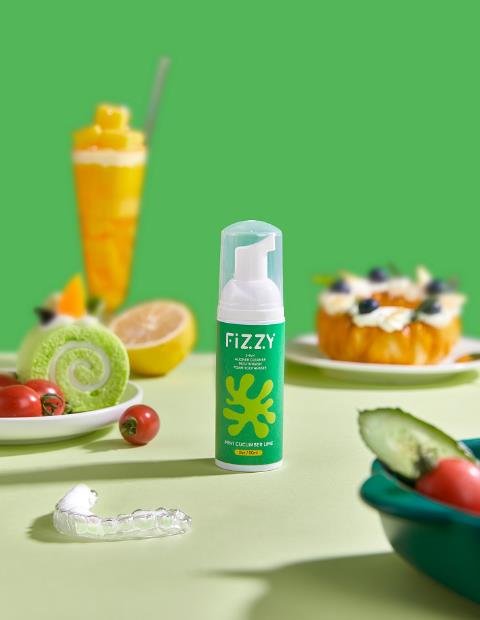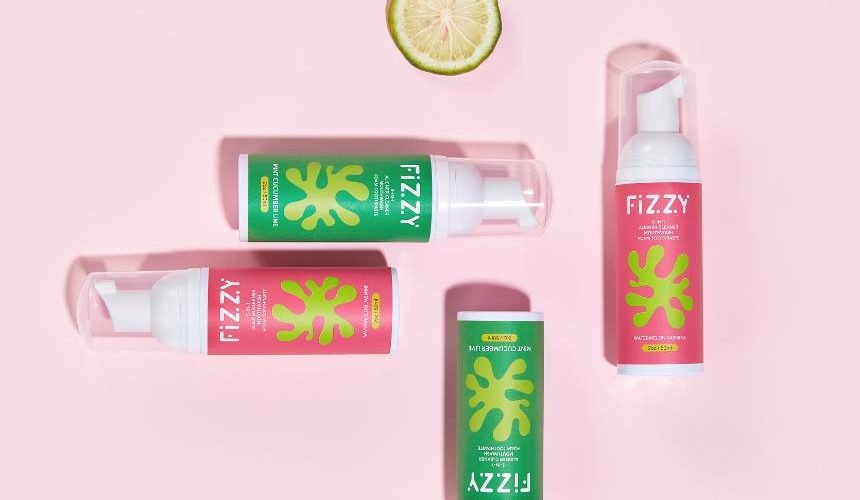Following your orthodontic treatment, whether it’s braces or clear aligners that have been taken off, you might find a sense of relief, knowing you no longer have to bother with ortho wax, aligner chewies, or aligner removal tools. But, there’s another important item you still require – your retainer. Retainers are an essential part of maintaining the results achieved through orthodontic treatment, ensuring that your teeth stay aligned and your smile remains stunning. Whether you wear a fixed retainer, a clear plastic retainer, or a traditional Hawley retainer, it’s crucial to familiarize yourself with the various types available and learn the proper cleaning techniques to uphold excellent oral hygiene. In this article, we will delve into the diverse categories of retainers, explore effective cleaning methods, and provide essential dos and don’ts to guide you in preserving your retainer’s cleanliness, freshness, and efficacy. Let’s embark on a journey through retainer care and uncover the art of maintaining pristine retainers!
Table of Contents
Exploring Retainer Varieties
In orthodontic practice, three primary types of retainers are commonly employed:
- Permanent Retainers: These non-removable retainers consist of a wire bonded to the back of your teeth. While they offer durability and invisibility, they might be slightly less comfortable for some individuals. Thorough brushing and flossing are imperative to prevent tartar and plaque accumulation.
- Clear Plastic Retainers: Also known as Essix, Vivera, or Zendura retainers, these are transparent, thin shells that snugly fit over your teeth. They combine comfort with discretion, resembling clear aligners. Regular and thorough cleaning is vital, as they can harbor bacteria and plaque if left unattended.
- Hawley Retainers: This traditional option includes an acrylic piece resting on the roof or floor of your mouth, connected by a wire across the front of your teeth. Hawley retainers are sturdy and cost-effective. Cleaning can be done using a toothbrush and toothpaste. However, they might be less comfortable for some wearers and have a visible metal wire.
How To Clean Hawley and Essix Retainers
Cleaning your retainer is essential to maintain good oral hygiene. There are various methods you can use, but some are better than others. Let’s break them down:
Fizzy 3-in-1 Foam Cleaner
Fizzy 3-in-1 foam cleaner is the perfect retainer cleaner for quick and easy cleaning. The foam retainer cleaner can be used on all clear aligner brands (Invisalign, Bite, Smile Direct Club, Candid, etc), retainers (Essix retainers/clear retainers, Hawley retainers), dental night guards, sports mouthguards and dentures. Fizzy retainer cleaner is free of alcohol, parabens, fluoride, hydrogen peroxide and artificial colors and hence is perfect for people with sensitive gum. No water needed to clean your retainers, clear aligners, mouth guard or dentures. All you need to do is to pump some foam on your retainer, let it sit for a few minutes and rinse with water. For deeper cleaning, use a soft bristle brush to gently brush every detail and corner. It can be also used as a mouthwash, breath freshener and foam toothpaste. Since it’s also TSA compliant and travel friendly, it’s the best retainer cleaner for on-the-go and at home use.
Baking Soda for Retainer Cleaning
Baking soda serves as a safe option for cleaning retainers, although its effectiveness might not match specialized products designed for tough stains or deep cleaning. Here’s a straightforward guide on using baking soda to clean your aligners:
Discover the simplicity of achieving pristine aligners with baking soda! Just adhere to these steps:

- Create a paste: Blend baking soda with water to form a paste, ensuring it’s not overly watery.
- Gentle brushing: Employ a soft-bristled toothbrush or an aligner-specific brush to delicately brush the aligners, covering all surfaces.
- Thorough rinse: After brushing, thoroughly rinse the aligners with water to eliminate any remnants of baking soda particles. Remember not to over-scrub, as baking soda is generally gentle, and excessive scrubbing could potentially damage the material.
Using an Ultrasonic Cleaner for Retainers
Utilizing an ultrasonic retainer cleaner makes the cleaning process easy and effective. Here’s a step-by-step breakdown:
- Fill the tank: Fill the tank of the ultrasonic cleaner with water, adhering to the provided instructions. Make sure not to overfill it.
- Optional cleaning solution: Some ultrasonic cleaners include specialized cleaning solutions. If yours does, add the recommended amount to the water in the tank. This solution enhances the cleaning process and aids in removing stubborn stains or bacteria.
- Place the retainer: Submerge your retainer in the water-filled tank, ensuring it’s fully immersed. Depending on the tank’s size, you can clean multiple retainers simultaneously.
- Activate the cleaner: Follow the provided instructions to turn on the ultrasonic cleaner. The cleaner generates small vibrations in the water, producing bubbles that gently cleanse the retainer.
- Wait for the cycle: Allow the cleaner to operate for the suggested cleaning duration. This typically takes a few minutes, although the time might vary based on the specific ultrasonic cleaner model.
- Rinse the retainer: Once the cleaning cycle concludes, remove the retainer from the tank and rinse it thoroughly under running water to eliminate any residue or cleaning solution.
- Dry and store: Pat the retainer dry using a soft towel and place it in its designated case to maintain its cleanliness until the next use.
- Using an ultrasonic retainer cleaner contributes to retaining the freshness of your retainers, ensuring they remain bacteria-free and visually clean. Always adhere to the manufacturer’s instructions and refrain from using the cleaner on materials or items not suitable for ultrasonic cleaning.
How Often Should Retainers Be Cleaned?
Regularly cleaning your retainers is vital for maintaining optimal oral hygiene and preventing the accumulation of harmful bacteria. Consistent cleaning helps prevent issues such as plaque buildup, bad breath, and potential oral health complications. It also ensures that your retainers effectively maintain teeth alignment during your orthodontic treatment journey.
In instances of illness, it’s crucial to clean your retainers immediately after recovery. Illness can leave behind detrimental bacteria and germs on your retainers, which could lead to reinfection or oral health problems if not adequately cleaned.
Performing a thorough deep cleaning for your retainer at least once a week is advisable. While daily cleaning is fundamental, a deep cleaning targets tenacious plaque, tartar, and debris that regular cleaning might overlook. This comprehensive cleaning routine ensures that your retainer remains fresh and devoid of harmful bacteria.
Cleaning Permanent Retainers: Step by Step
Cleaning a permanent retainer is both straightforward and essential for maintaining proper oral hygiene. Follow this uncomplicated guide:
- Regular brushing: Brush your teeth at least twice daily, as you would without a retainer. Ensure to brush around and over the retainer to eliminate any food particles or plaque.
- Utilize floss threaders: Given that a permanent retainer consists of a wire bonded to your teeth, standard floss might not fit in between them. Employ floss threaders or interdental brushes to clean between your teeth and the retainer wire.
- Mouthwash rinse: Incorporate an alcohol-free mouthwash into your routine to rinse your mouth. This helps eliminate bacteria around the retainer and maintains fresh breath.
- Scheduled dental check-ups: Regularly visit your dentist for check-ups and cleanings. Dental professionals can clean hard-to-reach areas around the retainer and ensure its condition is optimal.
- Avoid sticky or hard foods: Minimize consumption of sticky candies or hard foods that could potentially harm the retainer or become lodged in it.
By adhering to these steps, you can uphold the cleanliness of your permanent retainer and ensure outstanding oral health.
What to Avoid When Cleaning Your Retainer
Steering Clear of Hard-Bristle Toothbrushes
It’s wise to refrain from using hard-bristle toothbrushes for cleaning your teeth or retainer. These brushes can be overly abrasive on delicate surfaces and your gums, potentially leading to gum irritation, recession, and even scratching the enamel or damaging the retainer. Opt for a soft-bristle toothbrush instead, ensuring a gentle approach to cleaning both your teeth and your retainer, thus safeguarding your oral health.
Avoid Using Toothpaste
Employing toothpaste to clean your retainer can prove abrasive and detrimental to its material. Delicate retainers might degrade or lose their shape more rapidly when exposed to the harsh elements in toothpaste. To extend the life and effectiveness of your retainer in maintaining teeth alignment, opt for gentle, non-abrasive cleaning techniques.
Be Careful with UV Light Sanitizers
While UV light sanitizers can effectively eliminate certain bacteria and viruses, they might not be the most suitable option for retainer cleaning. Limited research exists regarding their ability to remove plaque, tartar, and debris from retainers. Additionally, prolonged exposure to UV light could potentially result in degradation or discoloration of retainer materials, impacting their fit and overall functionality.
In Summary
In conclusion, comprehending the diverse retainer types and adopting proper cleaning practices is essential for upholding excellent oral hygiene and ensuring the durability of your retainer. Whether your retainer is permanent, made of clear plastic, or a Hawley design, consistent cleaning and maintenance are pivotal in maintaining effective teeth alignment and preventing oral health complications. Utilizing safe and effective cleaning techniques like hydrogen peroxide, the Fizzy 3-in-1 Foam Cleaner, baking soda, and ultrasonic cleaners can help maintain a fresh, bacteria-free, and well-maintained retainer. Always adhere to manufacturer instructions and seek advice from your orthodontist for personalized recommendations. By prioritizing appropriate retainer care, you can confidently enjoy the benefits of a healthy and radiant smile for years to come.





